
Orekhovo-Zuyevo is an industrial city in Moscow Oblast, Russia, located 85 kilometers (53 mi) east of Moscow in a forested area on the Klyazma River. Orekhovo, often pronounced only as Orekh, is a Russian word which means "nut". The city was established in 1917 when three villages were merged, hence its name. Population: 120,670 (2010 Census); 122,248 (2002 Census); 137,198 (1989 Soviet census).

The Moscow Art Theatre (or MAT; ‹See Tfd›Russian: Московский Художественный академический театр, Moskovskiy Hudojestvenny Akademicheskiy Teatr was a theatre company in Moscow. It was founded in 1898 by the seminal Russian theatre practitioner Konstantin Stanislavski, together with the playwright and director Vladimir Nemirovich-Danchenko. It was conceived as a venue for naturalistic theatre, in contrast to the melodramas that were Russia's dominant form of theatre at the time. The theatre, the first to regularly put on shows implementing Stanislavski's system, proved hugely influential in the acting world and in the development of modern American theatre and drama.

Vladimir Ivanovich Nemirovich-Danchenko was a Soviet and Russian theatre director, writer, pedagogue, playwright, producer and theatre administrator, who founded the Moscow Art Theatre with his colleague, Konstantin Stanislavski, in 1898.
The Morozovs is a famous Old Believers Russian family of merchants and entrepreneurs. The family name Morozov originates from a Russian word moroz (мороз) that means frost. The founder of the family was Savva Vasilyevich Morozov (1770–1862). He had five sons and a daughter, Varvara Savvichna Morozova.
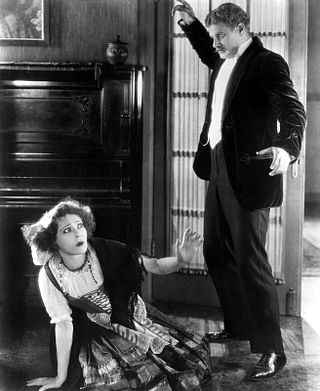
Realism in the theatre was a general movement that began in 19th-century theatre, around the 1870s, and remained present through much of the 20th century. It developed a set of dramatic and theatrical conventions with the aim of bringing a greater fidelity of real life to texts and performances. These conventions occur in the text, design, performance style, and narrative structure. They include recreating on stage a facsimile of real life except missing a fourth wall. Characters speak in naturalistic, authentic dialogue without verse or poetic stylings, and acting is meant to emulate human behaviour in real life. Narratives typically are psychologically driven, and include day-to-day, ordinary scenarios. Narrative action moves forward in time, and supernatural presences do not occur. Sound and music are diegetic only. Part of a broader artistic movement, it includes Naturalism and Socialist realism.

The Stanislavski and Nemirovich-Danchenko Moscow Academic Music Theatre is a music theatre in Moscow.
Ioasaf Aleksandrovich Tikhomirov (1872-1908) was a male actor from the Russian Empire. He trained under Vladimir Nemirovich-Danchenko, who offered "rigorous and intelligent" courses in actor training at the school of the Moscow Philharmonic Society. Tikhomirov was one of twelve students that Nemirovich brought with him to join the Moscow Art Theatre when he founded it with Constantin Stanislavski in 1898. He acted with the company until 1904 and also served as the director of the Art Theatre School. In 1904 Stanislavski sent Tikhomirov to help Maxim Gorky establish his newly founded theatre in Nizhny Novgorod, but the project was abandoned when the Russian censor banned every play that they proposed to stage.

Vasily Ivanovich Kachalov, was one of Russia's most renowned actors. He worked closely and often with Konstantin Stanislavski. He led the so-called Kachalov Group within the Moscow Art Theatre. It was Kachalov who played Hamlet in the Symbolist production of 1911.

Serafim Nikolayevich Sudbinin was a Russian sculptor, painter, ceramicist and stage actor, associated with the Moscow Art Theatre.
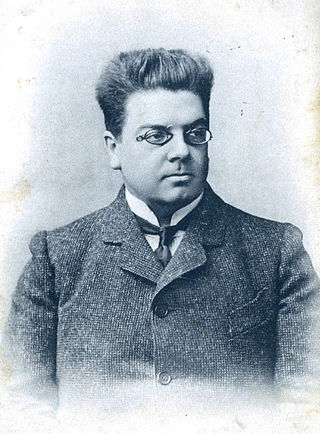
Vasily Vasilyevich Luzhsky was a Russian, Soviet stage actor, theatre director and pedagogue, associated with the Moscow Art Theatre.
The Cabal of Hypocrites is a four-act play by Mikhail Bulgakov also known as Molière.
The Griboyedov Prize was a Russian literary award established in 1878 by the Society of Russian Dramatists and Opera Composers to honor Alexander Griboyedov. The opening ceremony was held on 11 February, on the anniversary of the great Russian playwright's death. The prize, collected through private donations, was awarded to the best play of the year, produced in Saint Petersburg and Moscow by either Imperial Theatres or their private counterparts. Despite the fact that the Prize was launched in 1878, it was first awarded in 1883.
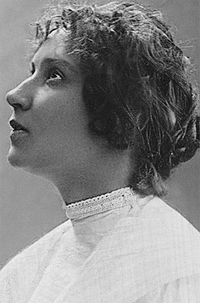
Maria Lyudomirovna Petrovskaya was a Russian stage actress associated with the Moscow Art Theatre, better known under her stage name Roksanova (Роксанова).
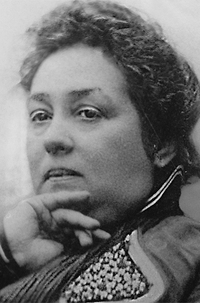
Maria Alexandrovna Samarova was a Moscow-born Russian Empire and Soviet stage actress and reader in drama, associated with the Moscow Art Theatre.
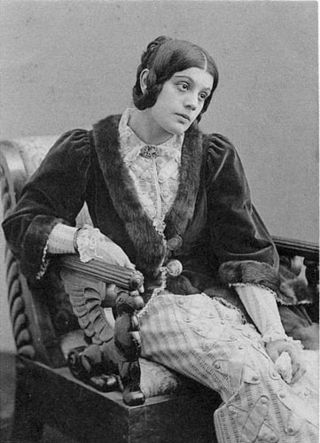
Maria Nikolayevna Krasovskaya-Kalitinskaya was a Russian actress, theatre director and reader in drama, better known under her stage name Maria Germanova (Германова).
Alexey Morosov is a Russian sculptor and painter. He is a graduate of the Moscow School of Painting, Sculpture and Architecture, where he studied under Lev Kerbel. He has been the director of the Moscow Academic Art School since 2013. He has been a member of the Russian Academy of Arts since 2014. He lives and works in Lucca, Italy.

Savva Vasilyevich Morozov was an eighteenth-century Russian entrepreneur, who founded the Morozov dynasty.

Ivan Savvich Morozov was a Russian entrepreneur who took part in the creation of the Tver Manufactory. He was the son of Savva Vasilyevich Morozov, but unlike his brothers is not recognised as founding any of the Morozov companies.
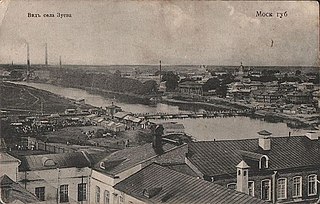
Zuevo was a historic village in Bogorodsky Uyezd, Moscow Governorate, Imperial Russia. It was the administrative centre of Zuevskaya volost. Since 1917 it has been part of the city of Orekhovo-Zuyevo. It was the birthplace of Savva Vasilyevich Morozov and Semyon Grigorievich Zimin, both peasants who became industrialists ensuring Zuevo play an important role in the industrialisation of Imperial Russia.






















